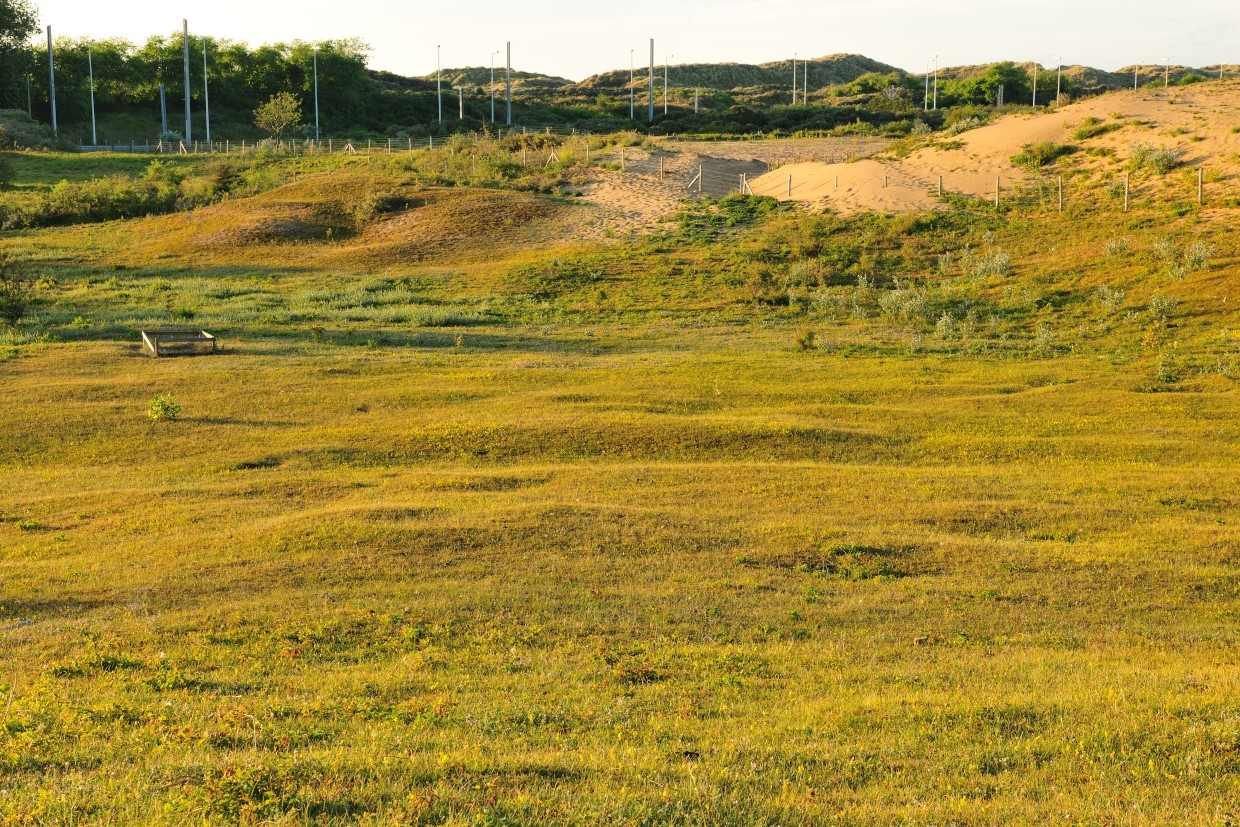Plant-sand interactions in coastal dunes for the design of nature-based solutions

Ter Yde (photo Yves Adams - Vildaphoto)
Details
Context and research project descriptionCoastal foredunes are of international biodiversity value. They form the primary natural line of defense against rising sea levels and extreme flooding events. They develop from ecological interactions between sand fluxes and plant growth. This plant-sand feedback shapes dune development along the entire successional gradient: short living shadow dunes develop at the high beach as a result of strandline vegetation, which in return facilitate further embryonal dune development. The occurrence of marram grass then eventually gives rise to the formation of higher foredunes. Since these dunes develop in response to tidal and wave conditions as well, they are dynamic structures that can track rising sea levels. There is a growing interest for nature-based solutions to tackle the consequences of climate change. The construction of \hybrid dune-dike systems\, where dunes are being built by using sand-fixating vegetation, could provide a promising solution to secure coastal regions against floods and storms. This research proposal will investigate how dunes develop as a function of aeolian sand fluxes, plant cover, plant traits and their spatial distribution. This will be achieved by combining field surveys, experiments and remote sensing. By parameterising an existing model, these results will be translated into a practical tool for coastal spatial planning and dune engineering.
Scientific research objective(s)
The general objective of this research is to understand the spatiotemporal dynamics of keystone plant species from coastal dunes, to quantify the interaction between coastal dune vegetation and sand dynamics, and to integrate these insights into predictive models for shadow, embryo, and blond dune development. I will achieve this goal by combining time series analysis, demographic, traits-based and modeling approaches. My research is timely and highly innovative (see Box 2) and will identify the ecological boundary conditions for natural dune development along the Flemish (urbanized) coast, as well as jointly contribute to biodiversity restoration and the design of future dune-dike nature-based solutions. As a PhD trainee, I will also actively participate in co-creation initiatives for dune-dike as a nature-based solution (NBS) and engage in the translation of my research into effective guidelines for dune-dike NBS development and beach/dune management along the Flemish coast (see outreach). More specifically, I will
1) study the current spatiotemporal dynamics of strandline plants species on the Flemish coast by the analysis of a unique time series of point data collected by INBO,
2) quantify the traits of the dominant species, as well as their variability with respect to sand dynamics,
3) quantify species’ sand accumulation potential and erosion resistance under lab and natural conditions (i.e., assessing their ecological engineering potential),
4) quantify the environmental and demographic bottlenecks for the establishment of these species,
5) parameterize the existing DUNEVEG model to explore how dune development at small spatial scales (20 x 20m²) will proceed under selected environmental change and/or nature management.
| Status | Running |
|---|---|
| Actual start/end date | 01/11/2023 - 31/10/2027 |
Teams
INBO Research theme(s)
- Protected nature
- Soil & air
- Nature & society
Tags
- dunes
- coastal
